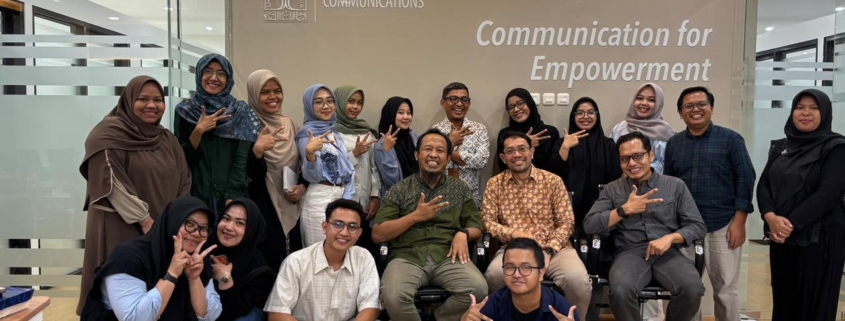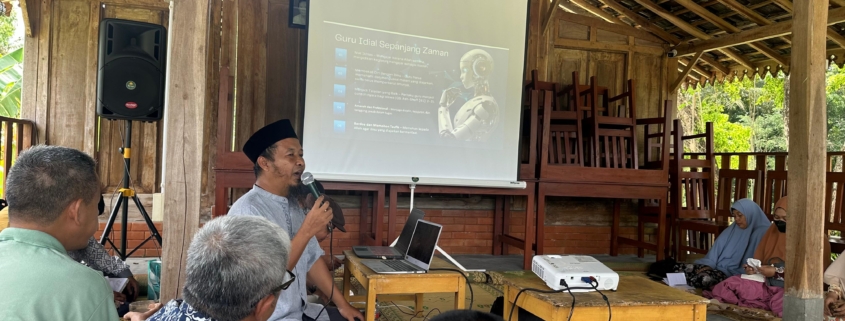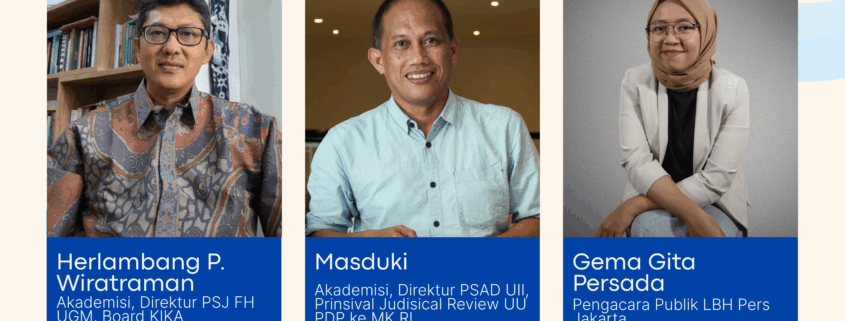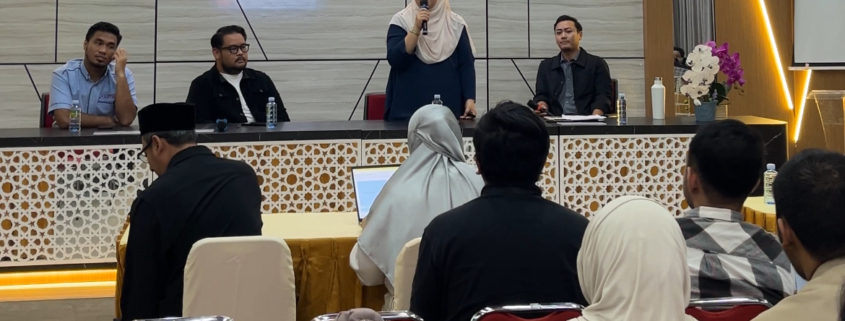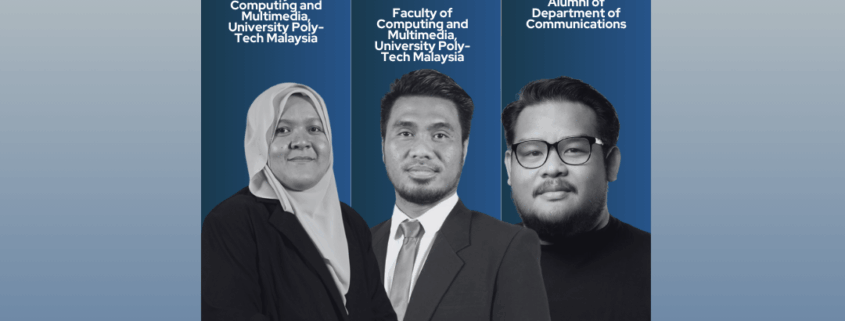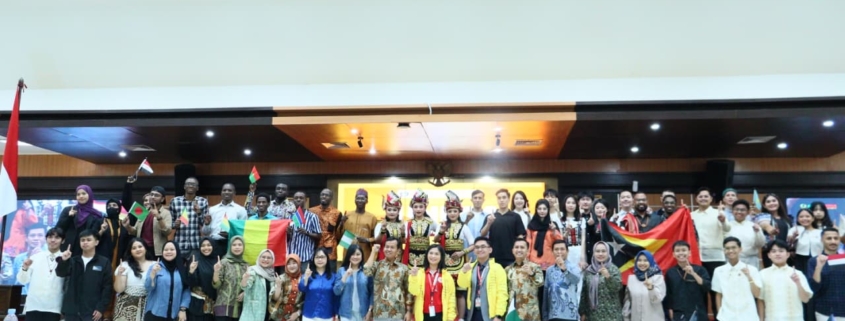Local culture is often considered conservative and outdated, but the digital age brings a different perspective. Although many believe that technology poses a threat to traditions and cultural heritage, in the right hands, the digital age presents a huge opportunity for the development of local culture.
This topic was discussed in the 6th Annual Workshop on Globalisation (AWG) programme, which focused on the topic From Local Culture to Global Connection: Multimedia and Communication in a Digital World. It was held on Wednesday, 29 October 2025, in the Auditorium Room on the 3rd floor of the Soekiman Wirasandjadja Building, UII.
In general, AWG is an annual programme held by the International Program, Department of Communications Science, UII. This time, there were three speakers who shared their insights with IPC 2022-2025 students and several students from the Faculty of Computing and Multimedia, University Poly-Tech Malaysia. Two of them were academics from Malaysia, and one was an alumnus of Communication Studies, UII, who specialises in a related field.
The event was opened by the Dean of the Faculty of Social and Cultural Sciences, UII, Nizamuddin Sadiq, S.Pd., M.Hum., Ph.D. He welcomed the guests from UPTM and conveyed a message of mutual collaboration for a bright future. “The AWG Annual Event is a platform where ideas, creativity, and collaboration from various countries come together. The relationship between Indonesia and Malaysia may sometimes be warm and at other times challenging, but as neighbours, we must always be kind, supportive, and cooperative. In Islam, it is said that a close neighbour is better than a distant relative, a principle we should embody to build a brighter future for our students,” he said.
The Dean of UPTM also expressed his hope that his visit to UII would provide him with new insights and perspectives from two interrelated cultures. UPTM even openly invited UII students and lecturers to collaborate. Several programmes offered include visiting lecturers, student exchanges, and several other programmes.
“Today, collaboration is more important than ever as it serves as a valuable way to strengthen partnerships. We have many ideas for future collaborations,” said Dr. Saifuddin Bin Haji Mohtaram.
“For next year, we would like to invite UII to join mobility programmes, conferences, and visiting lectures. Through these initiatives, we can continue to learn and share more kinds of knowledge as we expand together in this fast-changing environment,” he added.
From Local Culture to Global Connection: Multimedia and Communication in a Digital World
Moderated by UII Communication Science lecturer Ibnu Darmawan, S.I.Kom., M.I.Kom., the discussion explored how digital platforms open up enormous opportunities for cultural change. Not only do they emphasise innovation, but also challenges in management.
Three speakers from various fields of expertise presented diverse perspectives. Dr. Nadiah binti Yusof from the Faculty of Computing and Multimedia, UPTM, presented a theme entitled ‘Pattern Recognition in Songket Motifs to Explore Local Wisdom’. Linking local culture, especially songket motifs, to global connections in the digital world, she introduced in depth the subject of information retrieval in the context of information science.
‘The development of centralised databases and information retrieval systems has transformed user access to information. As technology advances, integrating diverse media forms such as audio, video, and graphics is crucial, enhancing user experience and enabling more dynamic exploration of information,’ she said.
‘Malaysia’s cultural heritage includes two types: tangible heritage, which consists of physical items such as graves and tombstones, and intangible heritage, which involves knowledge and skills expressed through oral traditions, customs, language, and textile arts. This study focuses on the intangible cultural heritage of textile arts, particularly songket motifs,’ he added.
Another interesting topic was Character Archetype, presented by Hafizz Al-Amirul bin Mohd Zanial from UPTM. With the case study of Upin & Ipin animation, the students seemed very enthusiastic and connected.
In general, Character Archetype is based on personal experiences and the shared culture of Indonesia and Malaysia. ‘The figures of Upin and Ipin, which reflect the collective behaviour and values of the people in the region, show how personal storytelling can strengthen the appeal of characters,’ he said.
In his explanation, Carl Jung introduced the concept of archetypes in 1919. According to Jung, archetypes are innate, universal patterns or models of thought and behaviour present in the collective unconscious.
The success of the Upin & Ipin animation is supported not only by technology but also by a deep understanding of specific characters and cultures. ‘The characters reflect values, identity, and cohesion that resonate deeply across Malaysian and regional audiences,’ he added.
The final material was presented by Bagoes Kresnawan, an alumnus of Communication Studies at UII who now works as a film director and content creator who explores local culture through cuisine. He also builds communities and brings authenticity to digital content.
‘My content isn’t the usual food review. I add a twist, a story, music, and thoughtful editing. Food Patrol is a documentary series about food, history, and people, short, calming, and impactful. I’m not chasing views or trends; I’m documenting stories that matter,’ said Bagoes.
He also added that the purpose of creating content is not just about viewer numbers. There is an idealism that is beautifully constructed. “I don’t chase views, I document stories. Food Patrol isn’t just about food, it’s about culture, history, and people,” he concluded.


